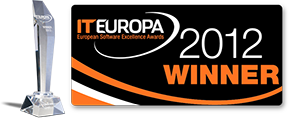Business Problem
Competition has been transformed completely on the telecommunication market. Incumbent Telco service providers do not compete with just each other these days. New and alternative service providers, contending for the customers, entered the arena, but mobile service providers lured away a considerable number of customers from the wired service providers. Wired providers entered the internet and TV signal broadcasting market, but so did the mobile service providers, while cable TV companies competed in the voice and internet services segment.
In the telecom sphere it is an old desire to create an integrated network which is capable of incorporating a multitude of services and applications regardless of the technology used. It was the rise of the IP (Internet Protocol) technology that made this possible. Creating an NGN permits the deployment of a high capacity network based on various access techniques that is connected to a uniform core network, integrates new and legacy services, and can be operated at a low cost.
It is safe to say that the emergence of NGN and supporting operating processes related to new services offered through the latter, using IT systems is a serious challenge for telecommunication service providers.
Solution
TSS supports the end-to-end troubleshooting process of services provided via broadband access by using NGN technology, through the use of advanced IT technology.
The following figure shows the TSS system as part of the eTOM operational model.
The concept is extremely easy to summarize. As an umbrella solution we build an analytical and diagnostics system over the BSS and OSS IT support systems – this is the TSS. Following various data polling operations and the analysis of the measurement results, the system provides a quick and objective overview of the condition of the service. In case of irregularities or service failures, the system can offer suggestions regarding the location of the failure and the network component that caused it. Through its interface to the work-flow system, after determining the fault the competent professional department receives an automated notification, and the TSS system itself can also eliminate certain kinds of problems automatically (e.g. remote modem reset).
Benefits
Efficient management of manual resources:
For services, performing and evaluating a great number of investigations without manual human intervention is essential. In addition to reactive troubleshooting it may be noted with regard to other application of the system that with the TSS.
Quick response to service related issues:
Significant reduction of fault location times. With quick tests it takes 2 to 3 minutes, with complex inspections it takes 3 to 5 minutes to complete the measurement, processing and evaluation procedure, at the end of which a dispatch and action proposal is already presented.
Full – end-to-end – testing in each case to identify the actual cause of the fault:
Beyond querying all system components that are required for providing the given service, according to the so called service tree structure, the system is also able to classify the detected anomalies according to cause and symptom criteria, ensuring that the dispatch proposal you receive is always related to the root cause.
Elimination of issues resulting from the differences of manual fault investigation methods:
Algorithms integrated into the system provide a homogeneous fault analysis methodology. Within one service the same test steps (elementary measurements) are performed in every case.
Elimination of human, sometimes subjective decisions:
Reducing the possibility of an assessment error, the system ensures that measurement results are always evaluated according to the same principles.
Documenting and archiving measurements and tests:
In a multi-player troubleshooting process arguments between the participants often occur as to who measured what and when. By automating the analysis of faults the capability of documenting measurement results in detail is also provided. Using TSS data archived in trouble tickets it is possible to query, even at customer level, what the status of their services was and when.
Automated trouble ticket forwarding based on dispatch proposals in the troubleshooting system:
TSS is able to integrate successfully to the troubleshooting workflow. Considering the integration, if a service trouble ticket is created in the workflow system then a TSS test is executed automatically, and then the fault with the detailed measurement data will be forwarded to the competent operator department indicated in the dispatch proposal. Automatic fault clearing is also supported by TSS. Regarding to the result of a measurement process, system administrators can configure fully automatic, half-automatic and manual fault clearing actions. At the end of a troubleshooting activity a repeated TSS verification test is the easiest way to ensure that the fault has really been eliminated.
Deployment
TSS system improves the competitiveness. Looking at financial aspects of the case it is cost reduction in the first place that can be realized, and an increase in the revenues as a secondary benefit:
- Problem reports that are handled with proper efficiency reduce churn
- Automated fault diagnostics and clearings eliminate manual activities
- Reduction in the number of spurious reports and erroneous dispatches also saves internal resources.
- Indirectly, the higher the customer satisfaction is the more orders are placed.
It is a business reality that telcos can realize financial benefits through the TSS system, which also means that the financial resources invested into the implementation of the system will be recovered in less than 2 years.



